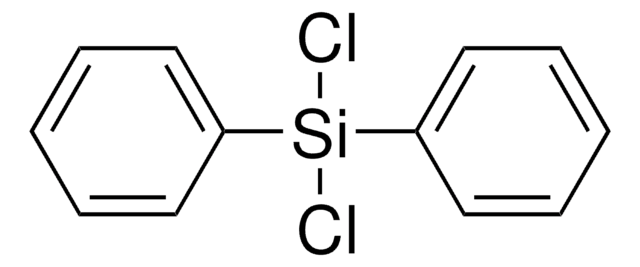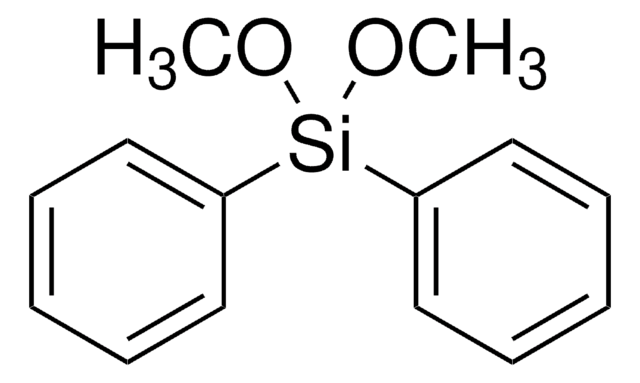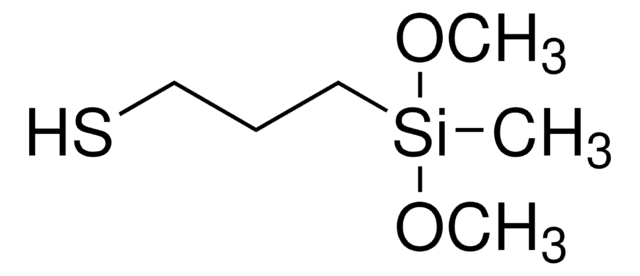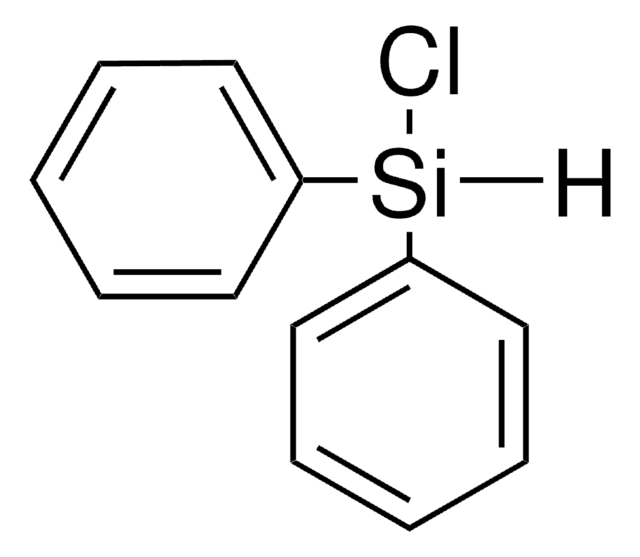All Photos(2)
About This Item
Linear Formula:
(C6H5)2Si(OH)2
CAS Number:
Molecular Weight:
216.31
Beilstein:
2523445
EC Number:
MDL number:
UNSPSC Code:
12352103
PubChem Substance ID:
NACRES:
NA.23
Recommended Products
vapor density
>1 (vs air)
Assay
95%
form
powder
SMILES string
O[Si](O)(c1ccccc1)c2ccccc2
InChI
1S/C12H12O2Si/c13-15(14,11-7-3-1-4-8-11)12-9-5-2-6-10-12/h1-10,13-14H
InChI key
OLLFKUHHDPMQFR-UHFFFAOYSA-N
Looking for similar products? Visit Product Comparison Guide
General description
Diphenylsilanediol(DPSD) is an alkoxysilane that is used as a silane based precusor in the synthesis of organosiloxane based resins.
Application
DPSD may be used as a precursor in the synthesis of linear vinyl oligosiloxane resins which can be potentially used in the fabrication of thermally resistant light emitting diode(LED) encapsulant. Mercaptopropyl-phenyl-oligosiloxane and phenyl-vinyl-oligosiloxane may be synthesized by using DPSD which can further be used as a thiolene derived dielectric layer for organic thin film transistors.
Signal Word
Danger
Hazard Statements
Precautionary Statements
Hazard Classifications
Flam. Sol. 1
Storage Class Code
4.1B - Flammable solid hazardous materials
WGK
WGK 1
Flash Point(F)
127.4 °F - closed cup
Flash Point(C)
53 °C - closed cup
Personal Protective Equipment
dust mask type N95 (US), Eyeshields, Gloves
Choose from one of the most recent versions:
Already Own This Product?
Find documentation for the products that you have recently purchased in the Document Library.
Customers Also Viewed
Sol-gel synthesized linear oligosiloxane-based hybrid material for a thermally-resistant light emitting diode (LED) encapsulant.
Bae J, et al.
Royal Society of Chemistry Advances, 3(23), 8871-8877 (2013)
Stereochemical basis of anticonvulsant drug action. Crystal and molecular structure of diphenylsilanediol.
Fawcett JK, et al.
Chemistry (Weinheim An Der Bergstrasse, Germany), 55(20), 3631-3635 (1977)
Thiol-Ene Reaction Derived Sol-Gel Hybrid Dielectric Layer for Oragnic Thin Film Transistors.
Kim J, et al.
ECS Transactions, 50(4), 83-88 (2013)
High color rendering white light-emitting diodes based on a green silicate phosphor mixed with a red dye-bridged hybrid.
Kwak S, et al.
Royal Society of Chemistry Advances, 2(32), 12371-12377 (2012)
Hyeon-Gyun Im et al.
ACS applied materials & interfaces, 12(50), 56462-56469 (2020-12-02)
Metal nanowires (NWs) are promising transparent conducting electrode (TCE) materials because of their excellent optoelectrical performance, intrinsic mechanical flexibility, and large-scale processability. However, the surface roughness, thermal/chemical instability, and limited electrical conductivity associated with empty spaces between metal NWs are
Our team of scientists has experience in all areas of research including Life Science, Material Science, Chemical Synthesis, Chromatography, Analytical and many others.
Contact Technical Service









